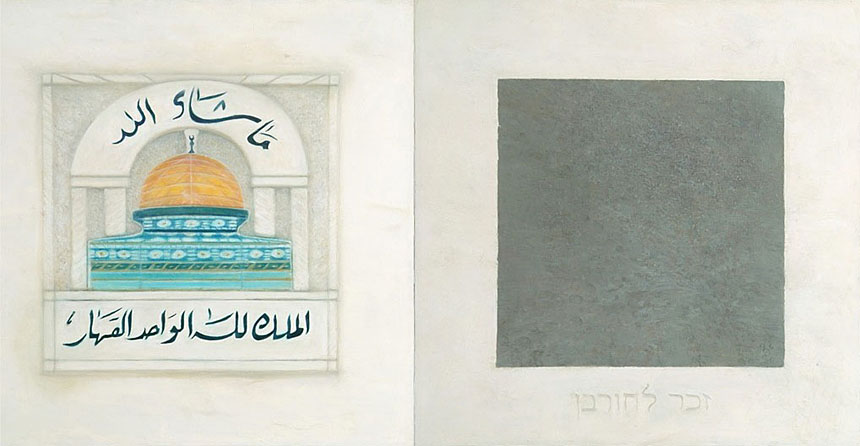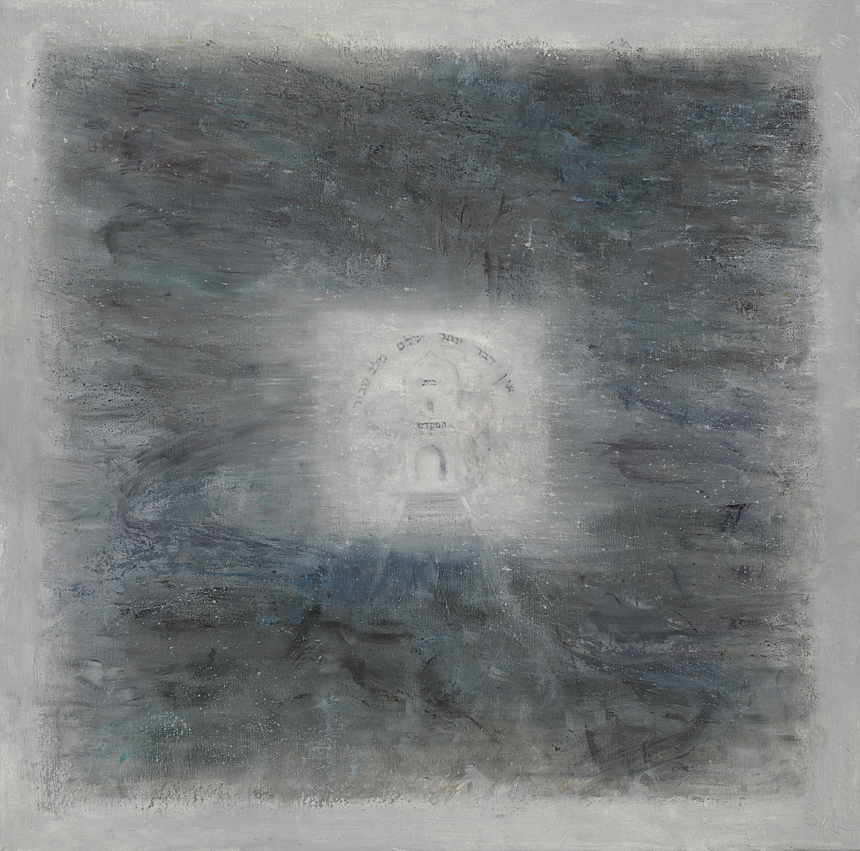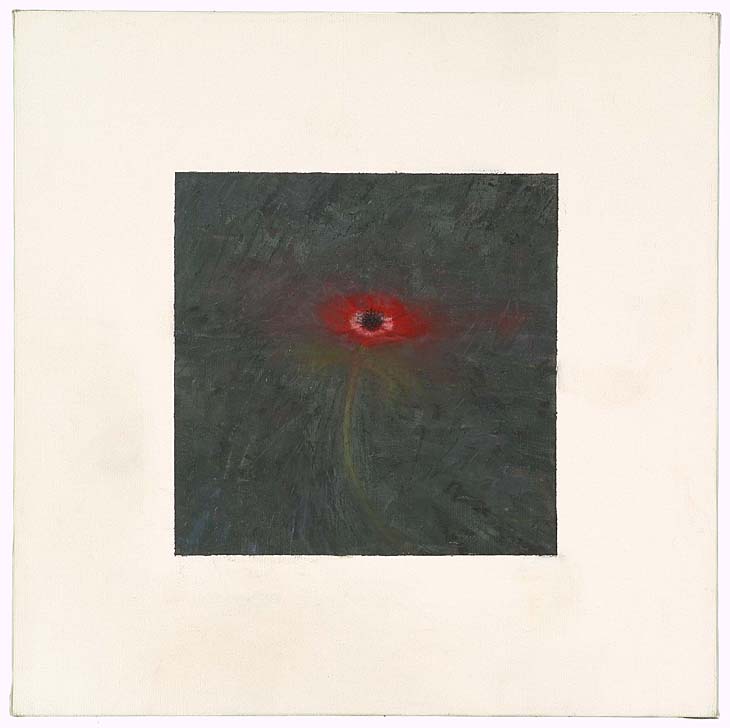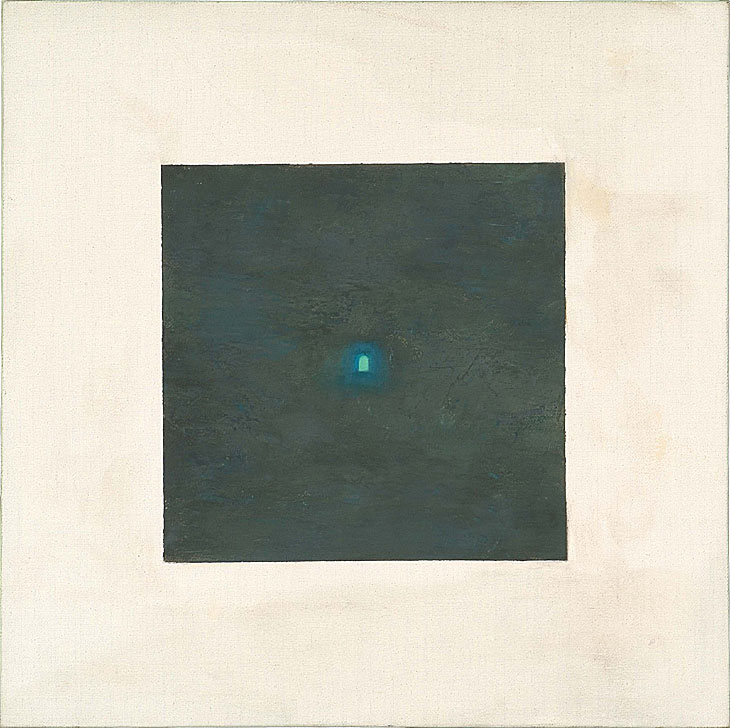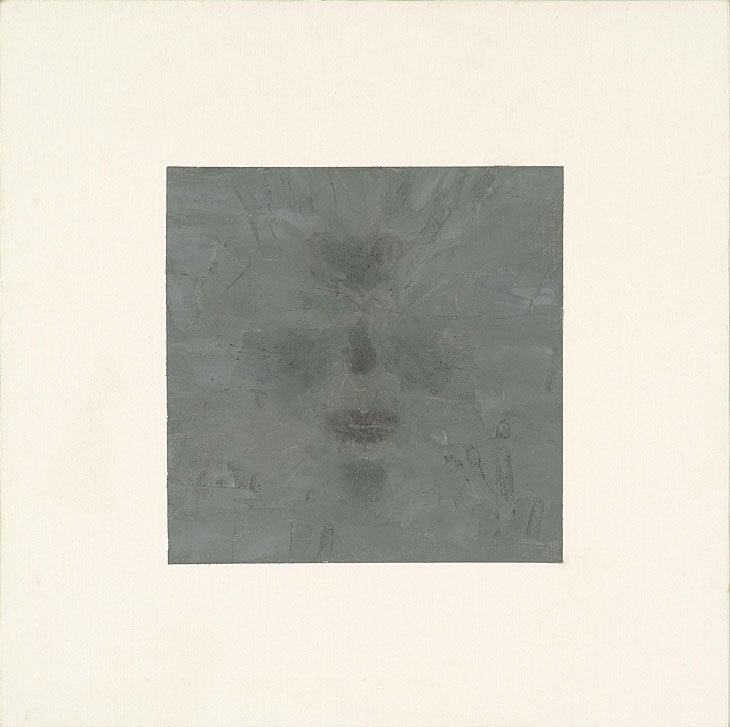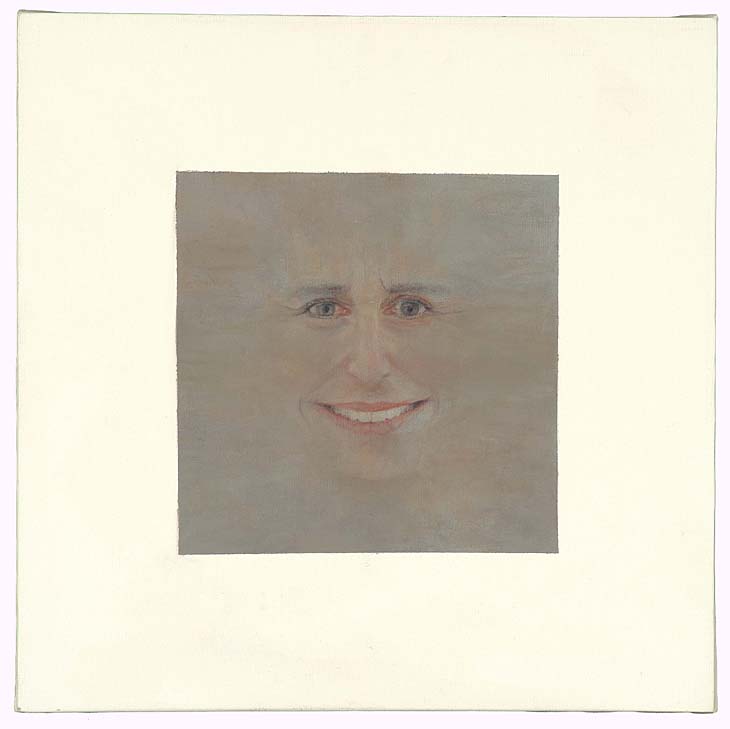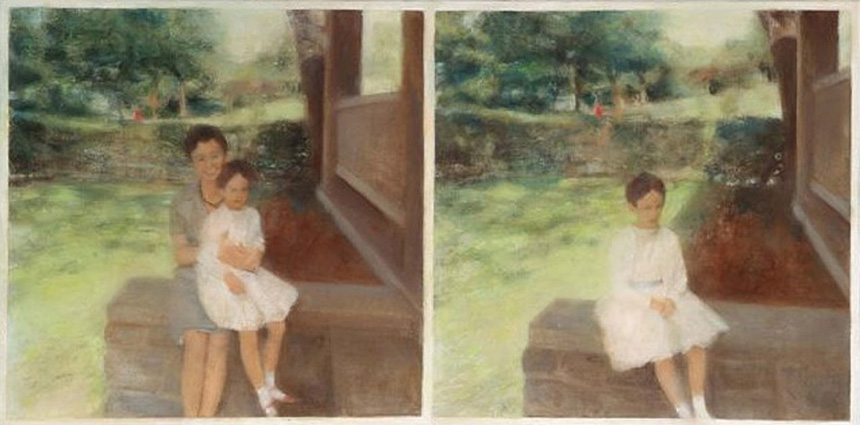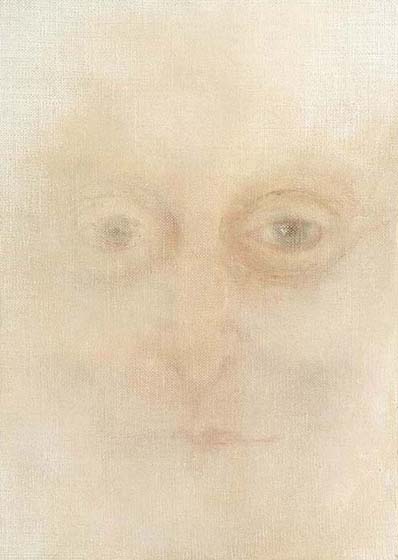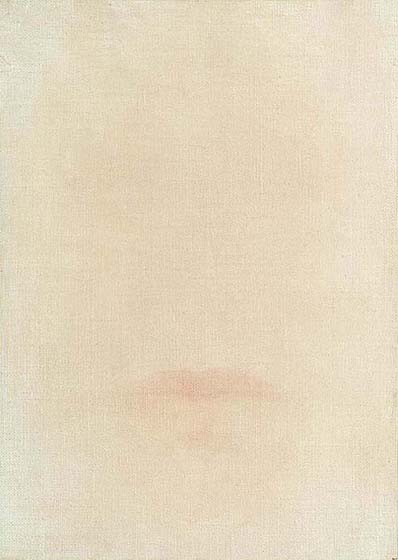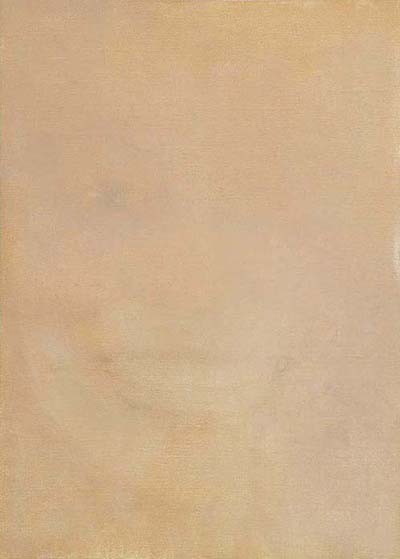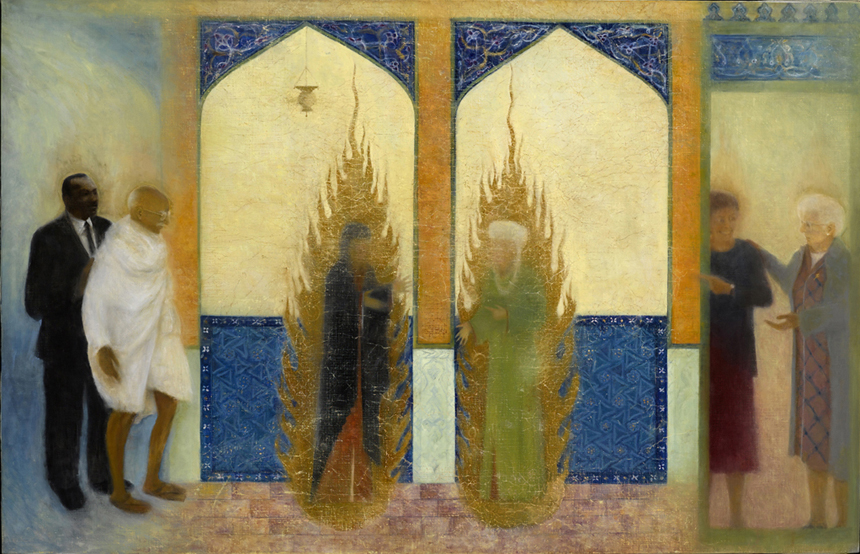Remembrance
The starting point for this series was the juxtaposition of two images that refer to the same place: the first, a grey square, part of a wall left unpainted in memory of the destruction of the Temple according to ancient Jewish custom; the second, a tile with a painting of the Dome of the Rock that adorns many Moslem homes. A dialogue is created, while questioning if such a dialogue is at all possible. And as the series progresses, the grey square suggests an understanding that loss and incompleteness are integral parts of life.
A wooden frame contains fourteen paintings, twelve of them in pairs. The first pair returns to the theme of the dark unpainted square, the memory of destruction, next to the image of the Dome of the Rock The pairs of destruction and growth continue: the erased trace of the Dome of the Rock next to a hazy image of the Jewish Temple, a private home built on the remnants of a former one, my ruined home next to a complete face, a complete face vs. a disfigured one The disfigurement of the face, of the person, ends the dichotomy of the two columns of pairs, and leads to a shared conclusion. Yet this shared existence is devoid of temple, home, or face, and what remains is only the dry and barren earth.
In Remembrance 4-6 the grey square, the unpainted part of the house, brings with it an acceptance of loss and incompleteness, an understanding that life is imperfect, yet human creativity is fostered by that very imperfection. The unpainted square turns into an unprimed canvas that sprouts a painting. An unfinished image of a plant appears; then an image of a glass which is filled by water, flower, and by the paint material itself, while becoming less exact; and finally images of loved and lost ones are recreated from the photo album – the more recent the image and the memory, the less clarity and closure are brought to them.
In Variations on a Grey Square, there emerges a space for inventiveness, imagination, and even playfulness.
Two images from almost the same moment lay in two different photo albums, waiting to be discovered. So similar, and yet so different – a girl with and without her mother.
Questioning our dependence on photographs for our memories, the following seven paintings are attempts to reconstruct the memory of faces from within. The result may be seen as a record of failure or impossibility, or perhaps as an ability to accept a fragmented and partial reality.
Nonphotographic Memory (mother, grandmother, aunt, friend) nos. 1-7, 2005-2006, oil on canvas on wood, 21 X 15 cm/8″ X 6″
In this large closing painting of the series personal, historic and religious imagery intertwine, with my childhood public and private heroes looking on at the meeting of Mohammed and Moses in heavenly Jerusalem, as portrayed in an ancient Islamic manuscript.
